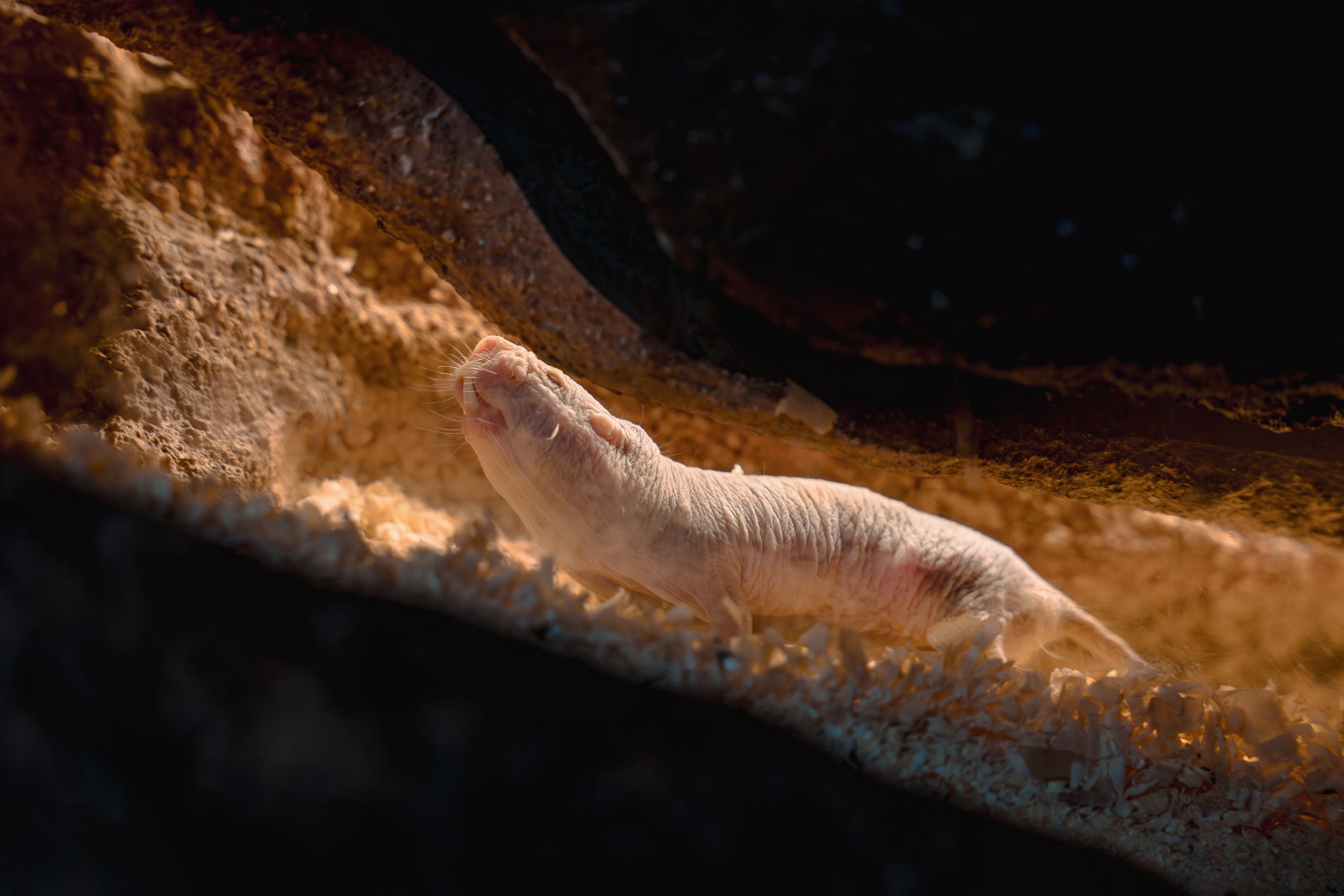One of nature’s strangest animals may hold the secret to living a long life, scientists have revealed.
The naked mole rat may not be known for its good looks, but the bald rodent has long been appreciated for its resistance to cancer and long life expectancy, which can reach almost 40 years.
A new study published in the journal Science has uncovered the subterranean animals have evolved a complex DNA repair mechanism that researchers say could be the key to their longevity.
In the paper, scientists at Tonji University in Shanghai, China, say the wrinkled rats have developed evolutionary mutations in cGAS – a protein involved in sensing the damage and repair to strands of DNA and can trigger immune responses.
They found these mutations may enhance the animal’s ability to repair aging-related genetic damage, whereas in other species, such as mice and humans, cGAS can suppress DNA repair.

Scientists behind the study think this different impact of cGAS on DNA may hold the answer to the naked mole rat’s long life.
Moreover, they said that despite its odd looks, the creature’s genetic make-up is “surprisingly” closer to humans than mice, making it a “valuable model” for studying its secrets to longevity.
Speaking to the BBC, Professor Gabriel Balmus, who studies DNA repair and ageing at the University of Cambridge, said the discovery was exciting and “the tip of the iceberg” when it comes to understanding why the rodents live such long lives.
“I think if we could reverse-engineer the naked mole-rat’s biology,” said Prof Balmus, “we might bring some much-needed therapies for an ageing society.”
In a related Perspective article, a type of academic review that offers a forward-looking view on new discoveries, biologist John Martinez said: “The findings from Chen et al. describe an unexpected role for naked mole-rat cGAS in the nucleus that influences longevity.
“Further research will be required to establish the roles that cGAS may play in the nucleus in other organisms, both short- and long-lived, but the answer may be substantially more complex than originally predicted.”


